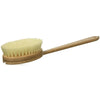Example of an Optimal Blood Test Result

Dr. Hulda Clark outlined what she considered a perfect blood test, placing emphasis on optimal protein, glucose, and cholesterol levels. According to Clark, protein levels should reflect a balance that supports tissue repair and immune function, but not overburden the body ability to clear proteins, particulary toxic ones of which we have many to continually remove. She advised maintaining glucose levels within a healthy range to ensure stable energy throughout the day and to prevent metabolic issues, but advised as little sugar as possible. For cholesterol, Clark recommended levels that support cellular function while minimizing cardiovascular risk. By focusing on these key blood markers, Clark believed individuals could gain insights into their overall health and take proactive steps to maintain wellness throughout their health journey.
According to Dr. Clark, a perfect blood test is one with the follow ranges:

What is Total bilirubin (T.b.)?
As an indicator of liver function and overall well-being, Dr. Hulda Clark emphasized the importance of maintaining healthy total bilirubin (T.B.) levels in the blood. According to her recommendations, elevated bilirubin levels may signal potential liver stress or dysfunction, often linked to factors such as toxin exposure, parasitic infections, or poor detoxification. Clark suggested focusing on gentle detoxification protocols, proper hydration, and liver support through natural supplements like milk thistle or dandelion root to help restore balance. Regular monitoring of bilirubin levels can provide valuable insights into liver health and guide proactive care measures.
It is the liver’s job to detoxify the hemoglobin that is salvaged from old worn-out red blood cells. Since red blood cells have a life span of only 120 days, about one percent of them die each day, and must be trapped by the spleen in order to salvage certain parts. Their iron must be salvaged. Their hemoglobin must be conjugated (detoxified), and excreted as bilirubin in the bile. If the liver is not capable of conjugation or the bile ducts are blocked, raw (undetoxified) bilirubin builds up in the circulation. You can detect a yellowish tint first in the whites of the eyes. It is called jaundice. There is no time to lose. If your T.b. is over 1.0, there is a serious problem. The problem can be corrected if the T.b. has not gone too high. Most of the time, the problem is aflatoxin toxicity from old, which is found most commonly in stored dry food. Dr. Clark recommends to stop at once eating all grains, including rice, bread, pasta, cereals, and popcorn. Also eat no food that could be moldy: all nuts and many fruits and anything fermented. Dr. Mercola recommends to also avoid cheap ground herbs as these can be very old and mold contaminated, though undetectable by taste. Five days of complete avoidance of these foods will get your T.b. levels moving downwards.
"You must stay on this restrictive diet until the T.b. is back to 1.0; then return to normal food slowly—watching the T.b. If your T.b. hovers around 0.9 to 1.0, you are too close to the brink of jaundice. Reduce grains; go off nuts, whole wheat,
and brown rice."
From: The Cure for All Advanced Cancers, p. 222
To read more you can download her book for free on Apple Books here, or use the Chatbot on the bottom right corner of this page for simple questions about Dr. Clark's views on optimal blood test values.

September 27, 2025
Immune Supplements: Top 10 Best Supplements to Boost Immunity
Are you looking for effective ways to enhance your body’s natural defense? Immune supplements have become popular choices to support the immune system booster function, especially in times of increased illness risk. With so many products...
Read more
September 27, 2025
Cell Phone and WiFi Safety: How to Prevent and Treat EMF Damage and Electrosensitivity
Electrohypersensitivity (EHS), often called electrosensitivity, has been a polarizing and increasingly relevant issue over the past decade and a half. Since the number of people identifying with these symptoms continues to grow exponent...
Read more
September 27, 2025
Raw Carrots: Nature’s Antibacterial & Antiseptic Food
For most of us, carrots are simply a crunchy snack or a source of vitamin A. But according to researcher Ray Peat, PhD, raw carrots offer something more unusual: they act as a kind of natural antiseptic inside the gut, helping to contro...
Read more




Leave a comment